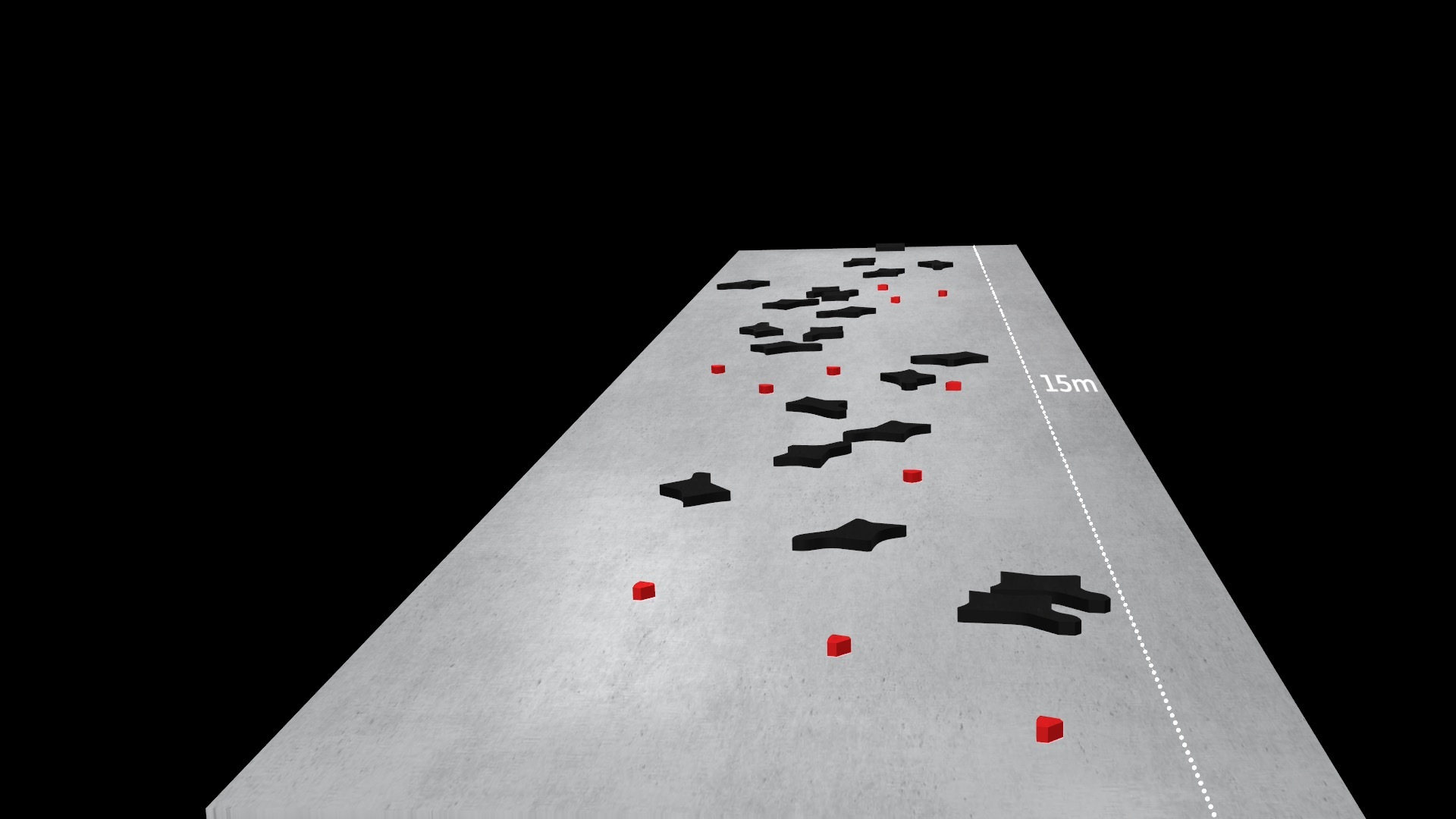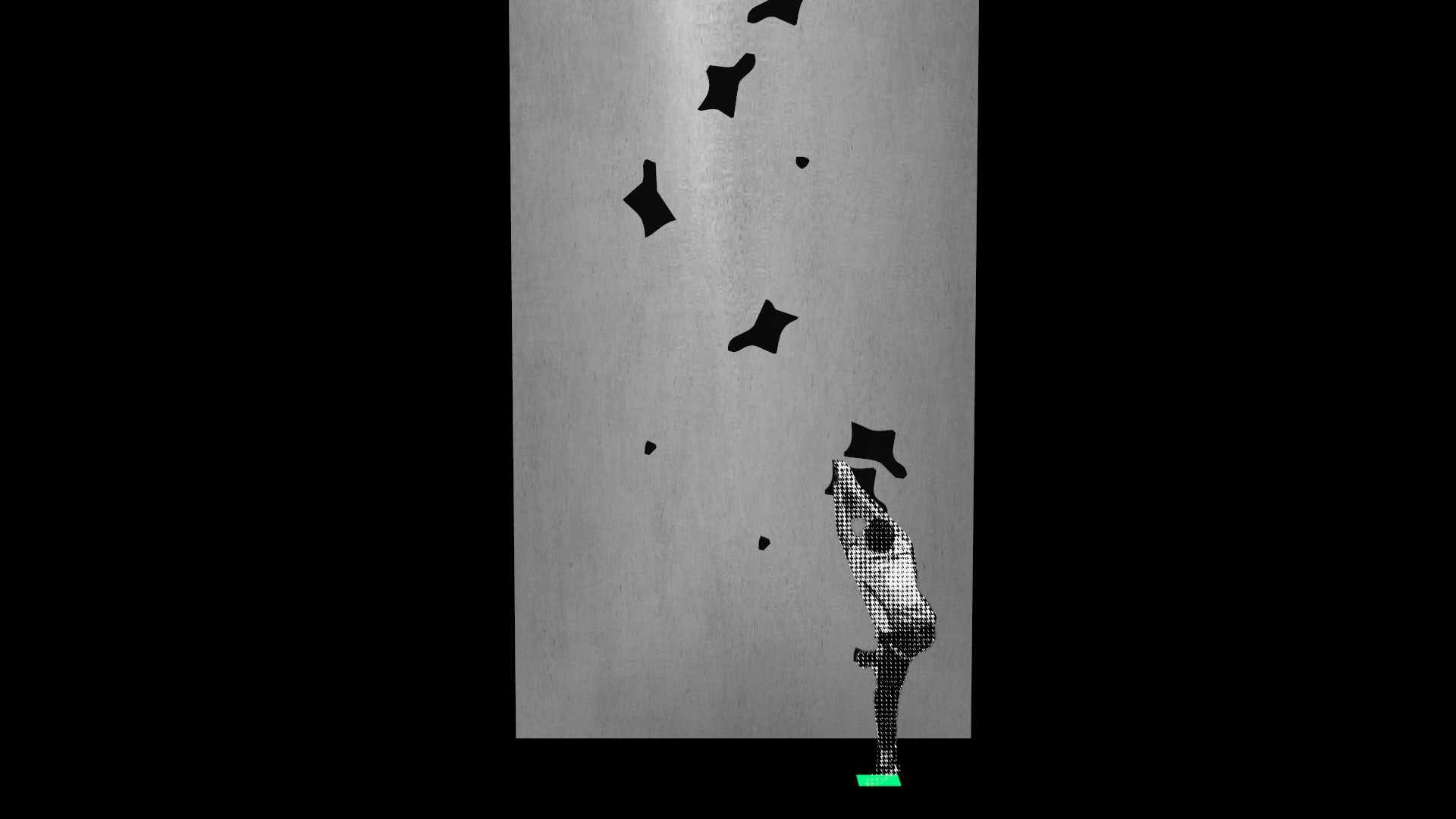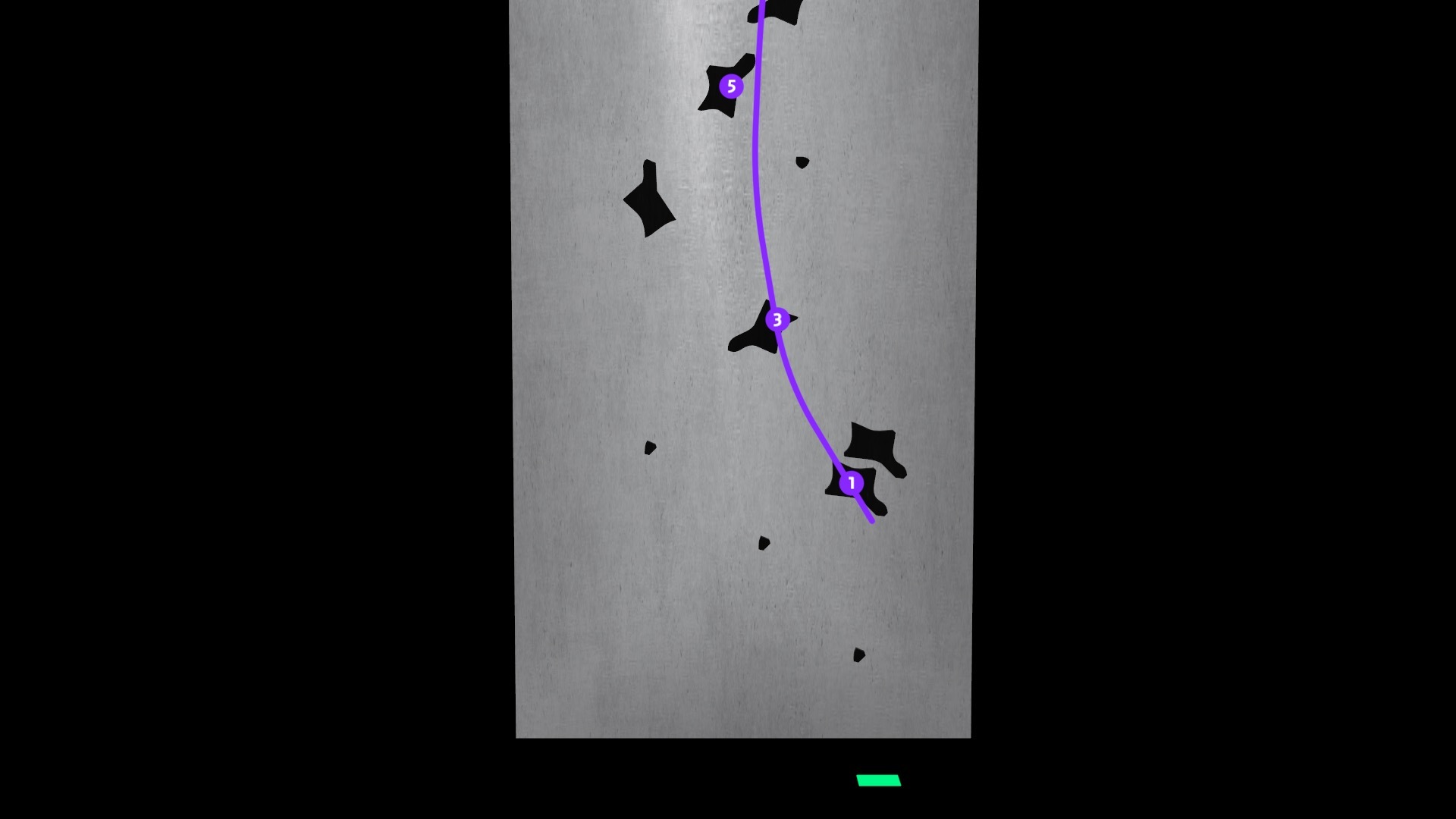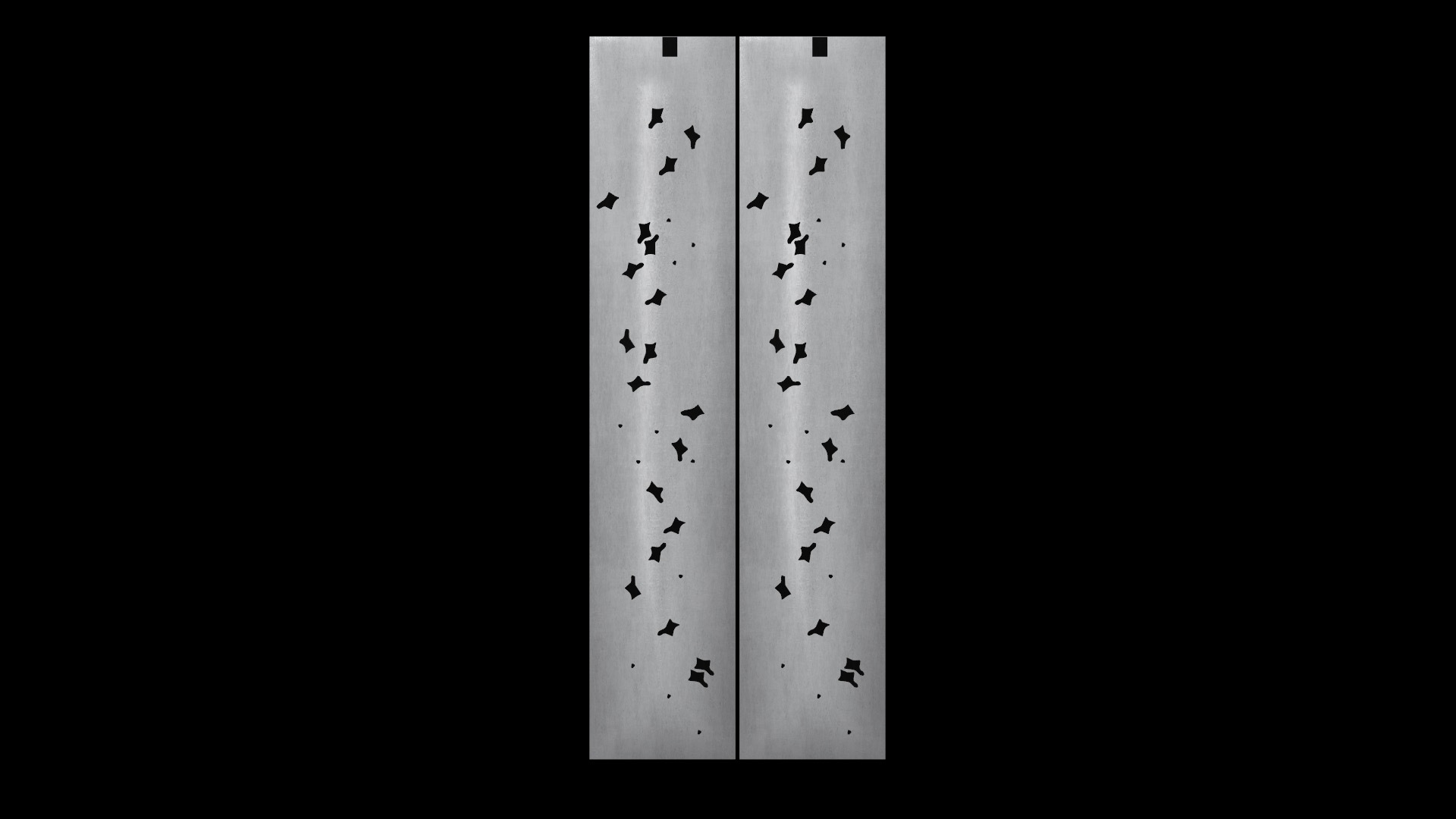Route runners
Climbing is otherwise a methodical sport to watch. Athletes assess and adapt to boulders and walls that change from one competition to the next.
The speed wall, however, is always the same.
20 hand holds and 11 foot holds over 4 ½ storeys with an overhang of five degrees. There are no rules for what you must grab or stand on but the use of hand holds counts towards a sequence.
Climbers can recall their sequence from memory and, although they evolve over time, height is a determining factor in how they start.




“Because of the distance of the holds, based on how far they are apart, there are a couple of different sequences, kinda based on under 5-foot-8 and like over 5-foot-9, in that range.”
Sean McColl | Team Canada climberHand holds 1 through 5 make up the first section of the wall known as the power stage. Climbers can move the starting pad to best align their body with their trajectory.
Here is the recent start for Indonesia’s Veddriq Leonardo, now the men’s world-record holder with a time of 5.208 seconds set in May, 2021.
The 5-foot-3 climber started with his pad under hold 1, then launched nearly straight up to holds 3 and 5, skipping 4.
This is known as the Tomoa skip, named after Japanese climber Tomoa Narasaki, and is a popular variation on the start.
And then there’s the 6-foot-2 Danyil Boldyrev of Ukraine, who in a previous world-record race started with his pad off to the right of holds 1 and 2, swung onto 3 and used 4 to launch past 5.


“In speed climbing, a lot of it is based on being in a box. You don’t want to get too scrunched, you don’t want to get too extended.”
Sean McColl | Team Canada climberHolds 6 through 15 make up the ladder-and-jump stage of the route, referring to the techniques most commonly used.
Laddering carries a lot of speed and jumping initiates power, so what is used depends on the sequence and execution.
Counter to both techniques is hold 9. It drifts far right of the next cluster, so climbers tend to skip it and smear the wall.
This foot technique is hidden at full speed but climbers use it to streamline their sequence.


“The wall does have quite a bit of texture, so as long as you put a lot of pressure on it [your foot] is not going to slip.”
Allanah Yip | Team Canada climberThe wall’s surface is a regulated mixture of resin and quartz sand and speed climbers use slightly bigger, more flexible climbing shoes for better grip.
Holds 15 through 20 are the last on the wall and, similar to No. 9, this section starts far off the usual trajectory. Climbers are trying to finish strong here, as with the women’s world-record run.
Russia’s Iuliia Kaplina smeared to load her foot on hold 18 and launched with both hands off 19 and 20 to tap the buzzer at 6.964 seconds.
Competition races appear to be head-to-head battles on two adjacent walls but only the finals bracket function that way.
And with speed as the first of the three climbing disciplines, in which each one contributes to the combined climbing score, there’s some strategy at play.


“In qualifiers, you’re just trying to get to the top as fast as possible. In a final when you’re going head-to-head, you just need to beat the person next to you.”
Allanah Yip | Team Canada climberSpeaking of finals, this is the first and last year speed climbing will be lumped in with the other disciplines. At the 2024 Games, it will be a separate event from bouldering and lead climbing.
Written and Animated by Timothy Moore, Edited by Phil King, Interactive Design by Jeremy Agius, Rules and race footage references from the International Federation of Sport Climbing.

/cloudfront-us-east-1.images.arcpublishing.com/tgam/TWBAHPRXWBHJJCEBO575W2OFWE.jpg)
/cloudfront-us-east-1.images.arcpublishing.com/tgam/AISY3DNC5RAULD2AFKL2Q56MLM.gif)
/cloudfront-us-east-1.images.arcpublishing.com/tgam/IKFFAYP2A5HANF74NX7VXOMXHA.jpg)